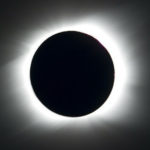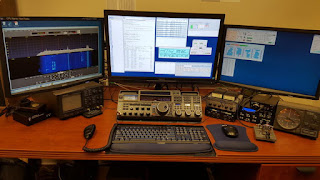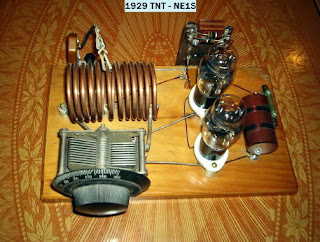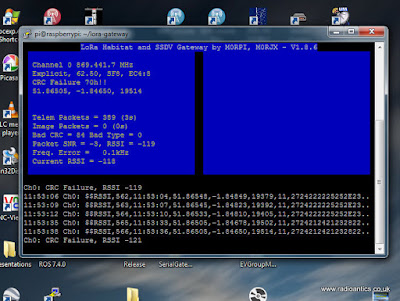 Just how do they do it?
Just how do they do it?
The Banggood portable BF-UV8D retails on eBay for just £14.25 with free shipping to the UK from China. In all honesty, just how can anyone compete?
This is a 5W RF 400-480MHz transceiver and comes complete with charger, back clip, antenna and battery. If I was Yaesu, Icom and Kenwood I’d throw in the towel now. Once the Chinese really wake up, the Japanese manufacturers have no chance of surviving. The Japanese will be driven more and more to niche markets, then die. I cannot see them staying around in the amateur market for too long.
At the moment the Japanese have quality on their side, but the Chinese will soon be as good. At the moment it seems everything, just about, is made in China. Recently I bought some Olympus binoculars – these said “Made in China”. The Chinese seem to be able to make most things at prices that simply cannot be matched.
20 years from now we’ll be living in a very different world.
You can buy a 433MHz module for just over £1 with free shipping from China!!
They make profits too, so how do they do it?
Roger Lapthorn, G3XBM, is a regular contributor to AmateurRadio.com and writes from Cambridge, England.
 ETH084 – Hurricane Harvey, Solar Eclipse, HamJam 2017 and More…
ETH084 – Hurricane Harvey, Solar Eclipse, HamJam 2017 and More…
In this episode, I am joined by Ian Kahn, KM4IK, as a guest co-host. Ian has been on my podcast before in episode 69 where we talked about PSK31 and in episode 74 where we talked about Field Day. I have really enjoyed having Ian on my show and was happy that he agreed to join me in this episode as a guest co-host.
We had a great conversation about many major things that have happened recently.
We start off talking about the major event hitting my home state of Texas and reeking major damage all along the Gulf Coast. Yea, I’m talking about Hurricane Harvey. I have several friends that are helping out right now down in the disaster area and more planning on deploying there soon.
We continue our discussion with last weeks major event, the “Great American Solar Eclipse”. We talk about our experience was, some things that we saw and was other hams around the country were doing, including the study that was performed by HamSci.
We went on to talk about how it never seems to fail how things always “come back into style”. Morse code is coming back to the Navy, HF is being taught to the national guard to use instead of relying totally on Satellite Phone communications and also how there is a push to get back into using Earth base navigation for ships at least as a back up to GPS.
We wrap up the episode by talking about HamJam 2017 in November. HamJam is a ham radio conference with three great speakers talking about three great topics. There are several really awesome raffle items.
Check out the show notes and listen to the episode
Curtis Mohr, K5CLM, is the author/owner of Everything Ham Radio Blog and Youtube channel. Contact him at [email protected].
 Station comfort and ergonomics
Station comfort and ergonomics
| Rig and monitor up to high |
- I had selves on the desk and I decided to put the monitor on one of the shelves, it looked very cool but over time I found the slight angle my head was on looking up (just slightly) became a chiropractic issue! I then decided to purchase a moveable arm for the monitor so I could adjust it to any position and this proved to be a great investment.
- Since the radio is the most expensive item I had it front and center on the desk. For me over time I found having my arm extended in front of me was not very comfortable. It may sound strange but the best position for me is having the radio off to my left or right side. My right arm keeps its natural bend as I tune and adjust the radio.
Monitors on swivel arms - I’m not sure about Icom, Kenwood or Yeasu but Elecraft has only 2 heights for the rig……either flat on the desk or with tilt stand (K3) or legs (KX3). For me both are just not comfortable. I wish they would incorporate adjustable legs for custom heights. I did purchase the Elecraft K-pod which fixed this height issue but that was not the sole reason for the K-pod purchase.
| Sideview of swivel arms |
Mike Weir, VE9KK, is a regular contributor to AmateurRadio.com and writes from New Brunswick, Canada. Contact him at [email protected].
 Building For The BK Party?
Building For The BK Party?

It's almost that time of the year when, once again, the '29ers start preparing for the winter Bruce Kelley 1929 CW Party. A recent posting on the Yahoo AWA (Builder's) Group by Lou, VE3AWA, reminded everyone that there were only 108 more sleeps before this year's Party.
In case you're not familiar with the 'BK', it's a winter CW event celebrating the early days of amateur radio.
Transmitters used for the event must be self-excited only ... no crystals are allowed ... and the tube(s) used must be those that were available in 1929 or earlier. It's an eye-opener to hear how the band must have sounded in the early days of amateur radio CW... even better if you're making those beautiful sounds yourself.
The 'BK' usually spawns a flurry of construction, so if you think it is something that might interest you, you have until December to get ready! Unfortunately many aspiring '29ers always leave it too late and inevitably run out of time before any last glitches can be overcome.
For many builders of '29-style gear, especially transmitters, the two-weekend December event is the highlight of the year as it gives them the opportunity to get on the air with their early-style rigs and work as many other '29ers as they can.
Every year there are numerous transcontinental CW contacts made with the simple, usually single-tube, self-excited oscillators that look as if they would have difficulty just being heard across town! Tuning in to the BK Party may be the closest thing you can find to a 'time machine' these days, as a small section of the CW bands (160-40m) take on the same sounds you would have heard when tuning across these bands in the late '20s.
When I first listened to a BK Party several years ago, I was surprised at the wide range of signal quality coming from these faithfully reproduced exhalers, running the gamut from the 'almost Collins-like' MOPAs to the unique sounding raw-AC notes coming from some of the one-lungers.
Most of the stations I have worked in past BK events were running less than 10W input yet, even with the terrible conditions experienced in the last two events, their signals were making it across the continent on the low bands ... and all were having a great time doing it!
Larry's (NE1S) TNT makes it back to the west coast every year in the BK Party.
Shown above is a fine little TNT built by Kevin, WB2QMY, in New York. It uses a very affordable UX-201A triode, originally manufactured in 1925 for radio receivers. Although Kevin's TNT puts out barely 2 watts on 80m CW, we had no trouble working each other in the BK QSO Party. If you build it, they will come!
If you've ever entertained thoughts of wanting to participate in the '29 QSO Party, this late-summer 'heads-up', could be just what you need to make it happen ... there is still plenty of time to put something together for this year's event. Here is the specific information for this year's BK Party.
There is plenty of information available right here on my blog that will answer many of your initial concerns surrounding tubes, circuits and components:
An Introduction To Building ... '29-Style
'29-Style Transmitters ... What To Build? - Part 1
'29-Style Transmitters ... What To Build? - Part 2
As well, my own website contains several detailed construction procedures on various transmitter styles used back in the day ... and an inspirational 'Gallery of '29-Style Transmitters' from other builders. In addition, there is a lot more '29-specific information in this blog, all of which can be found here, for several nights of bedtime reading!
Should you decide to take on a simple transmitter for this year's party (and there are dozens of participants hoping that you will), here are a few things to keep in mind:
You don't need much power to make contacts ... just a few watts will do it. If your antenna system is efficient and you can hear reasonably well, expect to work '29ers all across the continent.
Your transmitter does not have to 'look pretty'! You can breadboard up something with modern components and as long as the tube-year qualifies, you're good to go. Too many get bogged-down with making a showpiece ... that can always come later.
I, and others, have found Hartley oscillators to be the easiest to get going and often produce the best notes. Although the power limit this year has been increased to 25 watts DC input, just 2 or 3 watts coming from a simple Hartley will guarantee you a ticket on the BK time machine.
A wonderful source of advice, inspiration and even help with parts, can be had by joining the AWA (Builders) Group.
For now, I'll tempt you with the basic information regarding the QSO Party as published by the 'BK' sponsor...the AWA.
The Bruce Kelly 1929 QSO Party is a yearly AWA sponsored event where participants build their own transmitters using the designs, techniques, and tubes that were available in 1929 and earlier, and then put those classic transmitters on the air and try to contact as many other 1929 stations as possible. Since they use early designs, it is a cacophony of whooping, chirping, buzzing, clicking, drifting, swishing, swaying, warbling, and other interesting signals. This is what ham radio sounded like in 1929 and for two weekends in December its 1929 again on the ham bands.
Input Power: Transmitters are limited to a power INPUT of 25 watts or less.
Frequencies: The QSO Party typically operates between 1800 to 1810 Kcs, 3550 to 3580 Kcs , 7100 to 7125 Kcs, plus or minus depending on QRM. 40 meter activity is up significantly because it offers both night time AND daytime propagation!
Presently, a large percentage of the activity is from Minnesota and points eastward ... the west is poorly represented for some reason but activity out this way has been slowly increasing over the past few years.
You don't need much in the way of power ... every year I work several eastern 'BK' stations that are running just 2 or 3 watts, usually using receiver tubes pressed into RF oscillator service ... much like the original 'boys of '29' probably had to do.
With the solar cycle winding-down and the expected return of undisturbed great winter conditions, this year's BK Party should be better than ever ... especially with even more new clunkers chirping away in the night.
Should you join the fun, there will be many '29ers looking for you I can guarantee!
 |
| courtesy:VE3AWA |
Steve McDonald, VE7SL, is a regular contributor to AmateurRadio.com and writes from British Columbia, Canada. Contact him at [email protected].
 Building For The BK Party?
Building For The BK Party?

It's almost that time of the year when, once again, the '29ers start preparing for the winter Bruce Kelley 1929 CW Party. A recent posting on the Yahoo AWA (Builder's) Group by Lou, VE3AWA, reminded everyone that there were only 108 more sleeps before this year's Party.
In case you're not familiar with the 'BK', it's a winter CW event celebrating the early days of amateur radio.
Transmitters used for the event must be self-excited only ... no crystals are allowed ... and the tube(s) used must be those that were available in 1929 or earlier. It's an eye-opener to hear how the band must have sounded in the early days of amateur radio CW... even better if you're making those beautiful sounds yourself.
The 'BK' usually spawns a flurry of construction, so if you think it is something that might interest you, you have until December to get ready! Unfortunately many aspiring '29ers always leave it too late and inevitably run out of time before any last glitches can be overcome.
For many builders of '29-style gear, especially transmitters, the two-weekend December event is the highlight of the year as it gives them the opportunity to get on the air with their early-style rigs and work as many other '29ers as they can.
Every year there are numerous transcontinental CW contacts made with the simple, usually single-tube, self-excited oscillators that look as if they would have difficulty just being heard across town! Tuning in to the BK Party may be the closest thing you can find to a 'time machine' these days, as a small section of the CW bands (160-40m) take on the same sounds you would have heard when tuning across these bands in the late '20s.
When I first listened to a BK Party several years ago, I was surprised at the wide range of signal quality coming from these faithfully reproduced exhalers, running the gamut from the 'almost Collins-like' MOPAs to the unique sounding raw-AC notes coming from some of the one-lungers.
Most of the stations I have worked in past BK events were running less than 10W input yet, even with the terrible conditions experienced in the last two events, their signals were making it across the continent on the low bands ... and all were having a great time doing it!
Larry's (NE1S) TNT makes it back to the west coast every year in the BK Party.
Shown above is a fine little TNT built by Kevin, WB2QMY, in New York. It uses a very affordable UX-201A triode, originally manufactured in 1925 for radio receivers. Although Kevin's TNT puts out barely 2 watts on 80m CW, we had no trouble working each other in the BK QSO Party. If you build it, they will come!
If you've ever entertained thoughts of wanting to participate in the '29 QSO Party, this late-summer 'heads-up', could be just what you need to make it happen ... there is still plenty of time to put something together for this year's event. Here is the specific information for this year's BK Party.
There is plenty of information available right here on my blog that will answer many of your initial concerns surrounding tubes, circuits and components:
An Introduction To Building ... '29-Style
'29-Style Transmitters ... What To Build? - Part 1
'29-Style Transmitters ... What To Build? - Part 2
As well, my own website contains several detailed construction procedures on various transmitter styles used back in the day ... and an inspirational 'Gallery of '29-Style Transmitters' from other builders. In addition, there is a lot more '29-specific information in this blog, all of which can be found here, for several nights of bedtime reading!
Should you decide to take on a simple transmitter for this year's party (and there are dozens of participants hoping that you will), here are a few things to keep in mind:
You don't need much power to make contacts ... just a few watts will do it. If your antenna system is efficient and you can hear reasonably well, expect to work '29ers all across the continent.
Your transmitter does not have to 'look pretty'! You can breadboard up something with modern components and as long as the tube-year qualifies, you're good to go. Too many get bogged-down with making a showpiece ... that can always come later.
I, and others, have found Hartley oscillators to be the easiest to get going and often produce the best notes. Although the power limit this year has been increased to 25 watts DC input, just 2 or 3 watts coming from a simple Hartley will guarantee you a ticket on the BK time machine.
A wonderful source of advice, inspiration and even help with parts, can be had by joining the AWA (Builders) Group.
For now, I'll tempt you with the basic information regarding the QSO Party as published by the 'BK' sponsor...the AWA.
The Bruce Kelly 1929 QSO Party is a yearly AWA sponsored event where participants build their own transmitters using the designs, techniques, and tubes that were available in 1929 and earlier, and then put those classic transmitters on the air and try to contact as many other 1929 stations as possible. Since they use early designs, it is a cacophony of whooping, chirping, buzzing, clicking, drifting, swishing, swaying, warbling, and other interesting signals. This is what ham radio sounded like in 1929 and for two weekends in December its 1929 again on the ham bands.
Input Power: Transmitters are limited to a power INPUT of 25 watts or less.
Frequencies: The QSO Party typically operates between 1800 to 1810 Kcs, 3550 to 3580 Kcs , 7100 to 7125 Kcs, plus or minus depending on QRM. 40 meter activity is up significantly because it offers both night time AND daytime propagation!
Presently, a large percentage of the activity is from Minnesota and points eastward ... the west is poorly represented for some reason but activity out this way has been slowly increasing over the past few years.
You don't need much in the way of power ... every year I work several eastern 'BK' stations that are running just 2 or 3 watts, usually using receiver tubes pressed into RF oscillator service ... much like the original 'boys of '29' probably had to do.
With the solar cycle winding-down and the expected return of undisturbed great winter conditions, this year's BK Party should be better than ever ... especially with even more new clunkers chirping away in the night.
Should you join the fun, there will be many '29ers looking for you I can guarantee!
 |
| courtesy:VE3AWA |
Steve McDonald, VE7SL, is a regular contributor to AmateurRadio.com and writes from British Columbia, Canada. Contact him at [email protected].
 LHS Episode #197: Dark Star
LHS Episode #197: Dark Star
 In Episode 197 of Linux in the Ham Shack, the hosts discuss the influx of Chinese ham radio equipment and its effect on the hobby, Elmering, the solar eclipse (of course), project maintainers in open source, systemd, CloudLog, a GitHub dive (again) and much more. We also have an interview with Brian, N4AE, on youth in the hobby. We also address our upcoming hiatus from October 2, 2017 to January 8, 2018. Please send us feedback on what you'd like to see in the show as we retool it for a new round of 100 episodes.
In Episode 197 of Linux in the Ham Shack, the hosts discuss the influx of Chinese ham radio equipment and its effect on the hobby, Elmering, the solar eclipse (of course), project maintainers in open source, systemd, CloudLog, a GitHub dive (again) and much more. We also have an interview with Brian, N4AE, on youth in the hobby. We also address our upcoming hiatus from October 2, 2017 to January 8, 2018. Please send us feedback on what you'd like to see in the show as we retool it for a new round of 100 episodes.
73 de The LHS Crew
Russ Woodman, K5TUX, co-hosts the Linux in the Ham Shack podcast which is available for download in both MP3 and OGG audio format. Contact him at [email protected].
 868MHz LoRa HAB Tracking Success
868MHz LoRa HAB Tracking Success
868MHz ISM devices are available but are not as widely used. Back in December I posted about trying to track a flight by HAB Enthusiast Dave Akerman who is experimenting using LoRa devices on this band. I had limited success receiving that flight and another ones so when I saw that Dave was planning another flight today using 868MHz LoRa I had a rethink on how to approach tracking it.
The antenna I used was a collinear one built from cheap satellite coax, similar to that I built for ADB-S however rather than having a long coax run to the LoRa gateway I opted to put the Raspberry Pi up on the pole at the base of the antenna to limit any loss.
The antenna can be seen connected to the Raspberry Pi and LoRa add on board, the Pi has a WiFi dongle.
The antenna was inserted into a piece of conduit to keep it upright and it and the Pi were strapped to a 5m painters pole (using a plastic lid as an insulator)
A USB power pack was also strapped to the pole to keep the Pi powered, hopefully you can see it in the photo below.
The pole was put up and was about the same height as my normal dual band collinear
Well it all worked extremely well, and got a lot of decodes as can be seen by the pie-chart generated by the habitat.habhub.org system, the third best receiver only bettered by Dave himself (M0RPI) and a station nearer to the flight path.
You can see my geographical position relative to the flight below (I am the station NNE with the green line, about 160km away) and received a lot of telemetry strings even when the height of the balloon meant I was outside the 5 degree above the horizon circle (shown in green).
The Pi was connected to my network via WiFi and controlled by a Putty console on my shack PC
It was a useful experiment and I am thinking of installing a dedicated mast mounted LoRa receiver with 868 and 434MHz antennas (and possibly pre-amps and filters) following this result.
Andrew Garratt, MØNRD, is a regular contributor to AmateurRadio.com and writes from East Midlands, England. Contact him at [email protected].

























